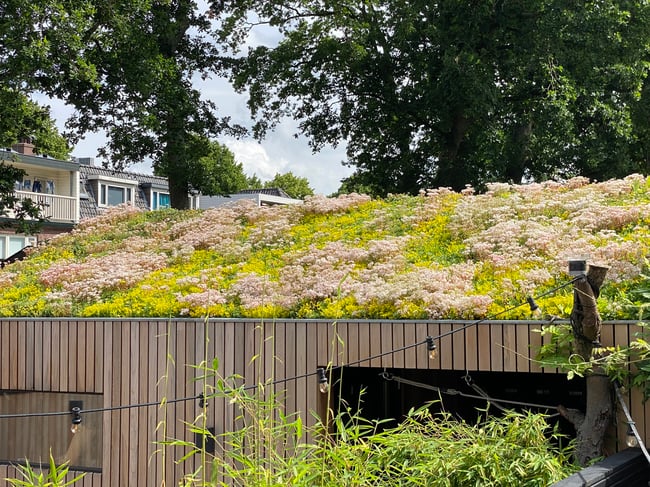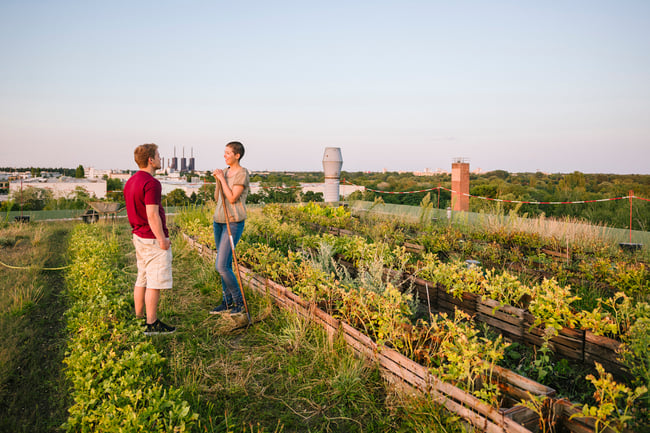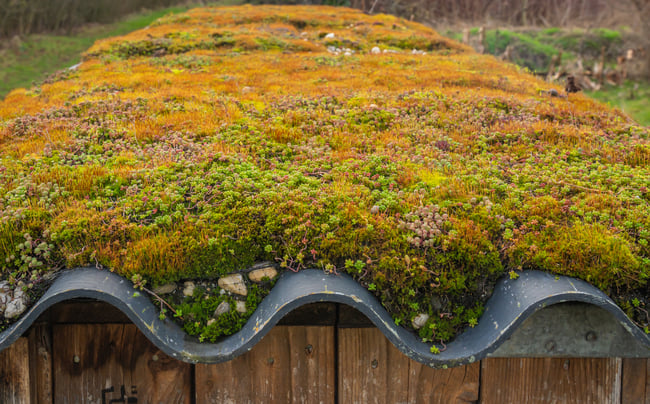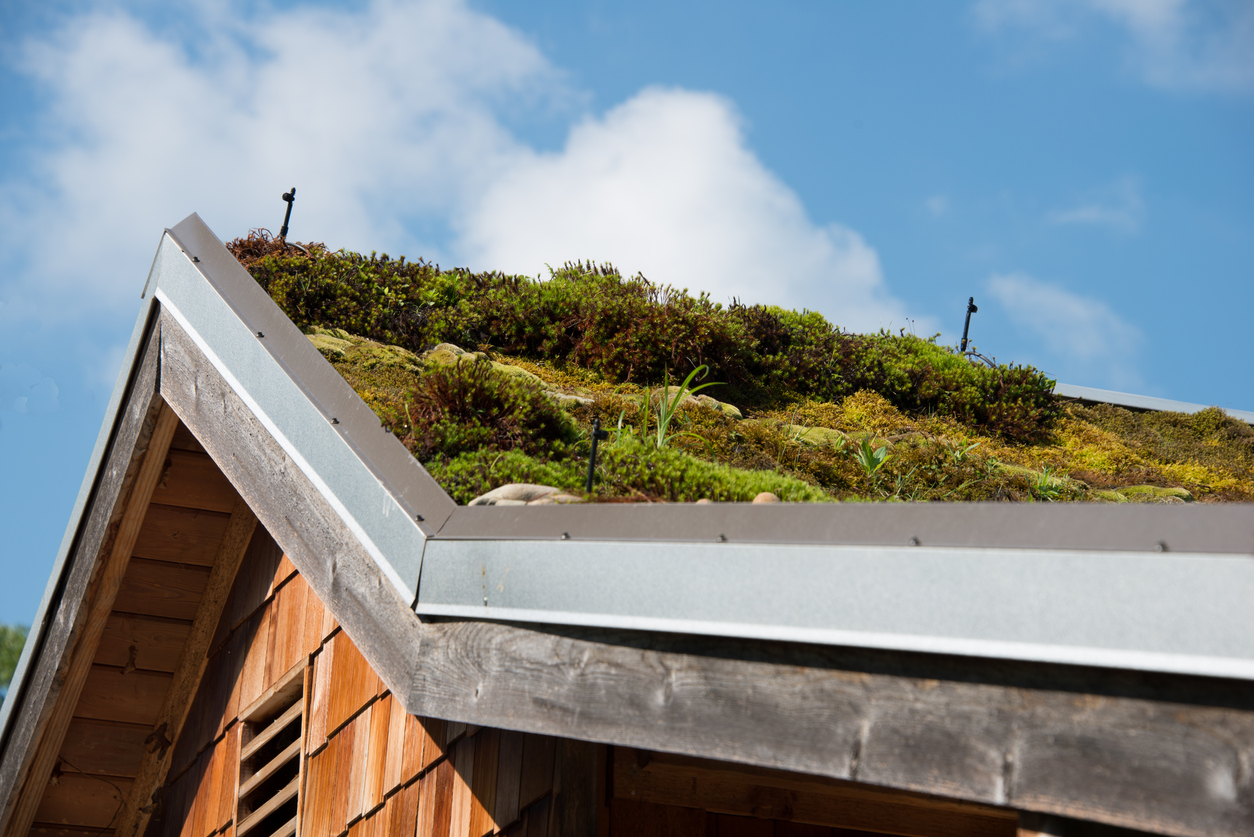In recent decades, the rapid growth of cities has given rise to a series of environmental and social challenges on an urban scale. The decrease of green spaces and the lack of permeable areas are some of the problems that affect the quality of life of its inhabitants. In this context, green roofs are an innovative and effective solution to promote more sustainable practices in the construction and use of buildings in urban areas.
Benefits of green roofs
Green roofs have proven to be an effective tool for enhancing sustainable urban development. These structures, also known as green roofs, consist of a layer of plants growing on the roof surface of buildings. This option, increasingly popular, presents environmental benefits on an urban scale, as well as for the occupants of these buildings.
Urban planning benefits
- Improvement of air quality: Green roofs act as carbon sinks, absorbing pollutant gases and suspended particles present in the air.
- Increased biodiversity: Green roofs provide habitats for a wide variety of plant and animal species, which contributes to biological diversity in urban areas.
- Rainwater retention: Green roofs help retain rainwater, reducing runoff and improving water quality. Part of the absorbed water evaporates, while the rest is directed to the wastewater system.
- Reduction of the heat island effect: Green roofs help reduce air temperature and solar radiation in urban areas, which mitigates this effect.

Individual benefits
- Reduction of energy use: Green roofs can help reduce energy use in HVAC and ventilation, as they act as regulators of temperature and humidity in buildings.
- Increased service life of the roof: Green roofs protect roofing materials from external influences such as sun, rain, wind, or temperature changes.
- Well-being of the occupants: Living or working in a green environment positively impacts people's well-being, even helping to prevent health problems.
Sustainable certifications and green roofs
In addition to urban and individual benefits, the use of green roofs can also contribute to the final score for obtaining sustainable certifications such as BREEAM, LEED, WELL, VERDE, and DGNB.
In the BREEAM methodology, the installation of a green roof can have an impact on the following requirements in the categories "Land use and ecology" and "Water":
- Improvement of the site's ecology (USE 4): in this requirement, a series of improvements related to the building's biodiversity must be proposed, with the installation of a green roof being one of them.
- Long-term impact on biodiversity (USE 5): a green roof provides new habitats for plant and animal species that last over the years, which can benefit us in obtaining this BREEAM requirement.
- Efficient water use equipment (AG 4): the presence of native and low-water-use plants on a green roof can help in achieving this BREEAM requirement.

In the case of the LEED sustainability certification, the installation of green roofs can affect three credits in the category "sustainable sites":
- Site Development – Protect or Restore Habitat: this LEED credit determines that 30% of the site area must contain native or adapted vegetation. In the case of urban buildings, the installation of a green roof is the ideal option to achieve this point.
- Open Space: this LEED credit determines that 30% of the plot area must be an open space for its users to have a connection with the outside, of which 25% must be vegetated. Again, the installation of green roofs is normally used in urban buildings to achieve this credit.
- Heat Island Reduction: strategies must be used to minimize the heat island effect both at the roof level and in urban development. In the case of roofs, one of the options to comply with this credit is the use of green roofs, although it is also possible to opt for finishes with very high solar reflection.
For the rest of the sustainable certifications such as WELL, VERDE, and DGNB, the benefits for obtaining points in the different categories are similar to those described. Therefore, the choice to install a green roof in a building can significantly help us with the certification process.
Types of green roofs
There are three main types of green roofs: extensive, intensive, and semi-intensive. Each of these types varies in terms of substrate depth, plant selection, use and maintenance.
Extensive green roofs
They consist of a shallow substrate layer, between 2 and 15 centimetres, with plants such as mosses, sedum, and grasses. These green roofs are very lightweight and require very little maintenance, and can even go without watering. These characteristics make them the most economical and common option.

Intensive green roofs
Also known as garden roofs, they are deeper than extensive ones, with a substrate starting from 15 centimetres. They can host an unlimited variety of plants, including trees and shrubs. These green roofs are heavier and require more maintenance, such as watering, fertilizing, and pruning, making them the type of green roof that incurs the highest costs.
Semi-intensive green roofs
They are an intermediate option between extensive and intensive green roofs, blending these two types. With a substrate between 15 and 45 centimetres, plants like sedum are planted in the thinner layers, while shrubs or trees are planted in the deeper parts. These green roofs require moderate maintenance, including periodic watering.
In conclusion, green roofs are a sustainable solution that provides a series of benefits to both the urban environment and the occupants of the buildings. Although their design and construction requires additional effort, the long-term benefits are significant, making them an excellent option to implement. In addition to their benefits on an urban and individual scale, they help in obtaining points for sustainable certifications.


